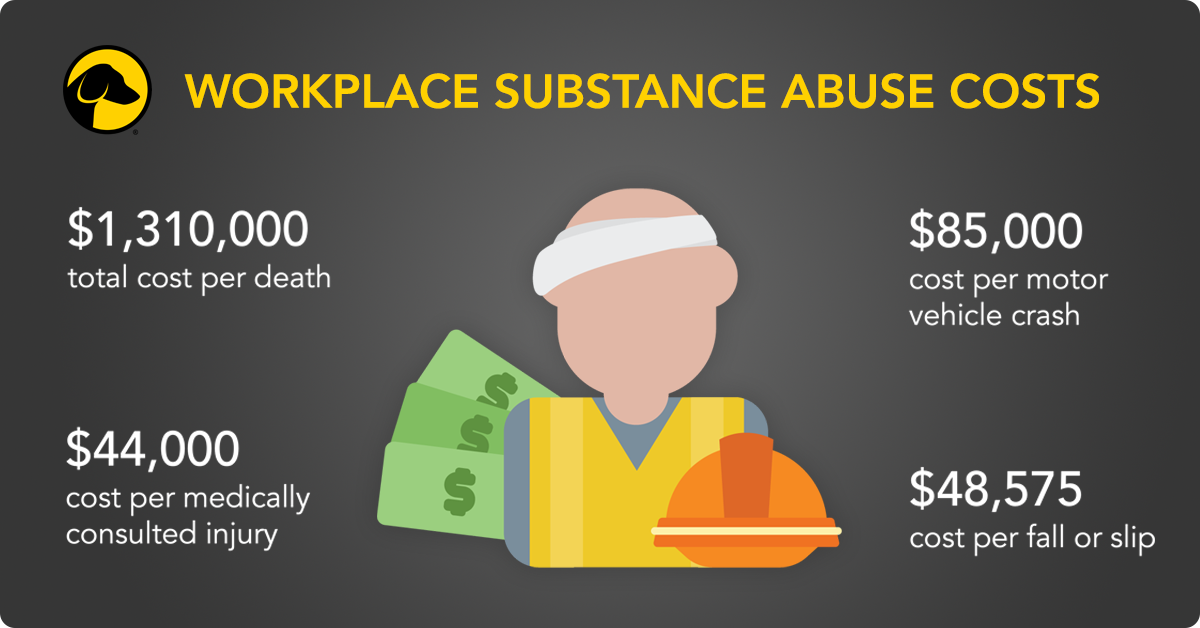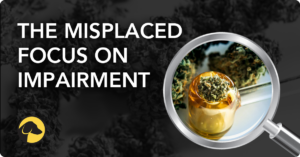
The Impacts of Increased Cannabis Use in the Workplace
The legalization of marijuana initiated a chain reaction that continues to make waves across the country, leading to sweeping changes as it goes. In its wake, employers face significant challenges managing the impacts of increased access and cannabis use in the workplace.
In a recent webinar, Aaron Atkinson and Ashlyn Hazard from Hound Labs shared trends, statistics, and survey data to frame where we’ve been, where we are, and where we’re going – and how employers can successfully confront the risk, safety, and financial challenges associated with cannabis in the workplace.
IMPACTS OF CANNABIS LEGALIZATION
Public opinion about THC legalization has shifted significantly in recent years. Most Americans (88%) now say cannabis should be legal. Only 12% think cannabis should be illegal, compared to 1969, when just 12% thought it should be legal. As public opinion has shifted, so has state legislation. Every year, more states adopt medical and recreational legalization. In fact, every state in the country besides South Carolina now has access to legal cannabis or directly borders a state with legal cannabis. This means that regardless of a company’s physical location, most of its employees can likely have relatively easy access to cannabis in some form.
From an employer perspective, most companies aren’t concerned about whether their employees choose to use cannabis during their personal time away from work. Just as with alcohol and tobacco, their primary concern is preventing use in the workplace, specifically, while on duty. So while employees may consume alcohol socially outside of work, workplace policies prohibit drinking and being intoxicated on the job. Similarly, employers are now establishing ground rules to reduce the risk of employees coming to work under the influence of cannabis.
INCREASE IN CANNABIS ACCESS AND USE
The National Survey of Drug Use and Health conducts an annual survey of adults related to drug and alcohol use. In the data showing marijuana use in the last 30 days, the two groups reporting the highest usage were those in the 18- to 25-year-old and 26- to 34-year-old age groups. These age groups are also the most likely to be employed. Another significant data point is that for every age group except for 12- to 17-year-olds, the number reporting use within the last 30 days is trending up.
The annual Quest Diagnostics Drug Testing Index reports the percentage of drug tests that are positive for marijuana. In other words, of all positive drug tests, what percentage are positive for marijuana? According to Quest’s data over the last decade, this number has steadily increased and is now at nearly 60% – meaning that more than half of all positive drug tests are positive for marijuana. These numbers clearly demonstrate that an increase in access to marijuana has translated to a corresponding increase in the use of the drug.
COSTS + RISKS OF CANNABIS IN THE WORKPLACE
For employers, this rise in use often translates to increased risks and ultimately, to increased costs for their business. The Recovery Centers of America recently released data showing that employers incur $81 billion in costs due to the impacts of drug and alcohol use in the workplace. These costs stem from a variety of risks including workplace accidents, disability and workers compensation claims, lost productivity and absenteeism, turnover, and recruitment. Another area of risk relates to data security, with the average cost of a breach reaching nearly four and a half million dollars, according to IBM.
In 2021, the National Safety Council (NSC) surveyed businesses across the United States. Among the respondents, 53% of employers who removed marijuana from their workplace drug testing programs saw an increase in safety incidents or a decrease in performance. The NSC also noted other impacts of cannabis use in the workplace such as increases in errors and mistakes on the job, absenteeism, workplace injuries, and heavy equipment crashes. The costs of these work injuries are summarized in the graphic above.
Looking again at the Drug Testing Index, the positivity rate for marijuana in the general U.S. workforce has been steadily increasing since legalization began in 2012. The costs employers incur due to workers’ compensation claims have coincided with that increase. The details of such expenses, which vary from serious motor vehicle crashes to more common slips, trips, and falls at work, are available in data compiled by the National Institute of Insurance. These costs can mount up for employers, especially with the added risks associated with cannabis use in the workplace.
THE EMPLOYER’S PREDICAMENT
Cannabis legalization and its downstream impacts create a chain of events that can be compared to threading beads on a string. Increasing legalization leads to increased access, which leads to increased use, which then increases risks and costs for businesses. Where does this leave employers?
At Hound Labs, we often use the analogy of being caught between a rock and a hard place to describe the employer’s predicament related to cannabis testing. On one side, employers who stop testing expose themselves to any number of safety, legal, and financial risks. On the other side, employers who keep testing often struggle to keep up with changing legislation, the risk of lawsuits, and the inability to attract and retain talent in an unsteady environment.
In states where cannabis can be easily accessed, employers who stop testing for marijuana lose a key barrier to preventing the use of the drug in the workplace. This is like dropping an insurance policy right at the time that risks are increasing. Their propensity to employ THC users then becomes higher than that of organizations who test for the drug, putting them at even greater risk.
Data from Quest Diagnostics reveals the impact of this decision, demonstrated by an increase in post-accident positivity rates corresponding with the decline in tests that include testing for marijuana. Nearly a decade ago, positivity for both pre-employment and post-accident testing was relatively low. Now, with some companies dropping THC testing and lacking a key deterrent to workplace use, more post-accident tests are returning positive results for marijuana. Pre-employment tests haven’t shown the same increase, which has widened the gap in positivity rates between the two testing reasons.
FINDING A SOLUTION
Drug testing programs help prevent risks that come from drug use. Employers may be tempted to drop drug testing if they haven’t observed tangible issues, but this is similar to a child who stops brushing his teeth when he doesn’t have cavities – instead of continuing to brush because it’s the brushing that prevents the cavities in the first place. Because testing programs help reduce the risk of issues occurring, it’s shortsighted to see a lack of downstream issues as the rationale for discontinuing testing.
Think of a drug testing program like a toolbox, fitted with different methods to be used alone or in combination with others for various applications in the workplace. Other specimen types include urine, oral fluid, and hair – each with a different window of detection. Hair, for example, reflects a long-term pattern of repetitive use going back up to 90 days, while urine may detect for up to a month.
Breath testing introduces a new sample type to the testing toolbox and delivers the shortest detection window for cannabis. By applying breath testing, employers can identify use that has occurred within two to three hours of the test. This short window isolates the type of recent use that can introduce higher risks to the workplace.
Employers are beginning to implement cannabis breath testing across the spectrum of employment in scenarios such as pre-employment, random testing, reasonable suspicion, and post-incident settings. Breath samples are collected, shipped to a lab, and processed using LC-MS technology. A negative result indicates no recent use, while a positive result indicates that an employee has used immediately before or during the workday.
Breath testing gives employers a way to continue to test for cannabis, but with a new approach – using an objective test for recent use. Incorporating a cannabis breath test into workplace testing programs gives employers the value of deterrence, helping them mitigate risks and maintain safety by detecting and deterring workday use.
The Hound® solution is available now and employers of all sizes, industries, and geographies are actively performing testing. Contact one of our experienced team members to learn more.

February 8, 2024
By AARON ATKINSON + ASHLYN HAZARD
Share












